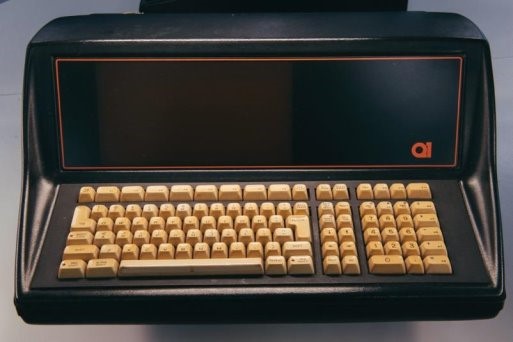In the UK two, out of only three in the world that are known, of the very first ever desktop computers were found. The discovery was made during a house clearance when company Just Clear saw the machines during a house clearing and thought they looked quite interesting.
They had no idea what they had found and put them aside until they could do more research. Many internet searches later and with not much more information, the founder of Just Clear, Brendan O’Shea decided to consult with an expert, only to be shocked to be told that this model was the world’s very first fully-integrated desktop computer powered by a single chip microprocessor for CPU. Launched with the intel 8008 processor in December 1972, the model looked more like a typewriter, but the creation of this model marked an important milestone in computing history. The series was marketed as a well-built, high-quality unit with a unique industrial design and featured a neon-orange plasma display. This first true microcomputer was manufactured by the Q1 Corporation in the United States and only a few were imported into Britain at the time.
Commenting on the find, Brendan said: “Our teams find all sorts of things while clearing houses on a daily basis, some with historical significance, but never did I imagine that we’d find something so important to the field of technology and the history of computing! Occasionally, we encounter items deemed important enough to preserve and archive for the future in an auction sale or, in this case, an exhibition. I’m told that these models are extremely rare, so to find a pair of them is beyond exciting. The computers were buried under a hoard of boxes and initially we just thought they were two nice pieces of 70’s computing history that perhaps we would have data-wiped if not suitable for reuse and sent to our E-waste stream. However, after consulting our advisors and conducting research over time, we realised we had, in fact uncovered two ultra-rare items, of which there are only three known in existence in the world today. We are so honoured to be able to share these pieces of history with the public and contribute to the celebration of vintage computing”.
The pair have been showcased as the main highlight of a technology exhibition at Kingston University titled Creating the Everything Device: Showcasing the machines that built the future, which has been curated by Mr. Paul Neve and Professor Islam Choudhury at Kingston University’s Computer Science Department. Commenting on them, Paul Neve said; “There would be no PCs, no Macs, no Apple or Android phones without the Q1 Corporation. The early pioneers in the 1970’s and 1980’s laid the foundation for today’s ‘everything’ device – the modern computer, which is so ubiquitous in everyday life. We rely on computers for our work, communication, productivity and entertainment, but without the early trailblazers none of this would exist”.
The current exhibition features sixty different computers and gaming machines, some first generation, including Atari, Sinclair ZX81, ZX Spectrum, Sinclair QL, BBC Micro, Acorn Electron, Amstrad, Commodore, and the Dragon 32. However we will watch with interest what will happen to the historic Q1s, as they will either be offered for auction, or sold privately, no doubt to a computer or technology enthusiast, or a museum in the UK, or abroad. As they were such a vital component in technological history Brendan is hoping for the latter, as the machine not only helps us to understand where we’ve come from and how technology has developed, but it also reminds us of how far we’ve come.

